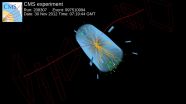(Press-News.org) Washington, D.C., May 13, 2015 -- Using efficiency principles borrowed from "lean" manufacturing processes, two Washington-area hospitals have gotten a life-saving drug to stroke patients significantly quicker, while also obtaining better diagnostic information using MRI. That's according to a new study published online ahead of print in the May 13 issue of Neurology®, the medical journal of the American Academy of Neurology.
National benchmarks call for getting stroke patients from the door of the emergency room to injection with the clot-busting drug known as intravenous tissue plasminogen activator, or IV tPA in 60 minutes or less because the sooner tPA is administered, the better the outcome. But before the drug can be administered, patients must receive either a CT or MRI scan, to determine whether they are suitable candidates for the drug treatment. While an MRI can provide more valuable diagnostic information, it takes longer than a CT scan. So, few hospitals in the country routinely use an MRI as first-line brain imaging for acute stroke patients.
However, teams at MedStar Washington Hospital Center and Suburban Hospital in Bethesda, Md., found that by analyzing and changing their work processes, they could reduce "door-to-needle" times from 93 to 55 minutes, a 40 percent difference and meet the benchmark of 60 minutes or less while using MRI for first-line brain imaging, according to the study's physicians. This research was supported by the NIH's National Institute of Neurological Disorders and Stroke.
"Using MRI scans gives doctors valuable information to help make treatment decisions, including the location and size of the stroke if present, when it occurred, the extent of blood vessel blockage and amount of brain tissue at risk, new or old bleeding, and potentially the cause of the stroke," said Amie Hsia, MD, medical director of the Comprehensive Stroke Center at MedStar Washington Hospital Center, and the study's senior author. "We borrowed ideas from manufacturers who use 'lean' production processes to make their plants more efficient, and applied them to healthcare. Our colleagues at Washington University in St. Louis had previously applied these principles to the evaluation of stroke with CT, which inspired us to take a similar approach with MRI."
A critical factor in improving efficiency is teamwork among all the different areas involved in evaluating stroke patients, including emergency room physicians, nurses and technicians; radiology and laboratory staff; and acute stroke team physicians and nurses.
"We wanted to share with other hospitals exactly how we streamlined our processes so they could see what's possible, and consider applying similar interventions within their own institutions, to be able to use MRI scans when needed to quickly guide treatment decisions for patients with suspected stroke," added Dr. Hsia.
Among the efficiency-improving steps taken by the hospitals were creating process maps to identify roadblocks causing delays, reorganizing the work flow to reduce handoffs, and assigning specific roles to each member of the stroke team. The study's authors concluded that by using these approaches, other hospitals could reduce their door-to-needle times as well, and begin using MRI scans. The time-saving techniques are known as SMART, or Screening with MRI for Accurate and Rapid stroke Treatment.
In addition, according to Dr. Hsia, many of these interventions can also be applied to hospitals that primarily use screening CT scans, because they affect the processes before and after the brain scan rather than the imaging itself.
MedStar Washington Hospital Center is the first and only hospital in the Washington region to be certified as a Comprehensive Stroke Center by The Joint Commission. The Hospital Center is one of only 73 medical centers nationwide to receive this prestigious designation, which indicates that a hospital offers the highest level of care for patients with the most severe and challenging types of strokes and cerebrovascular disease.
INFORMATION:
MedStar Washington Hospital Center is a 926-bed, major teaching and research hospital. It is the largest private, not-for-profit hospital in the nation's capital, among the 100 largest hospitals in the nation and a major referral center for treating the most complex cases. U.S.News & World Report consistently ranks the hospital's cardiology and heart surgery program as one of the nation's best. It also is a respected top facility in the areas of cancer, diabetes & endocrinology, Ear, Nose & Throat, gastroenterology & GI surgery, geriatrics, gynecology, nephrology, pulmonology and urology. It operates MedSTAR, a nationally-verified level I trauma center with a state-of-the-art fleet of helicopters and ambulances, and also operates the region's only adult Burn Center.
MISSOULA -- The amount of time and effort songbirds spend warming their eggs directly correlates to their own survival probability and that of their eggs, according to a study by University of Montana researchers that will appear in an upcoming issue of The American Naturalist.
The amount of care parents provide their young varies greatly across the animal kingdom, particularly among songbird species, who spend anywhere from 20 percent to nearly 100 percent of daylight hours warming eggs in their nests. A team of researchers led by Thomas Martin, senior scientist and ...
Cats may hold vital clues about the health benefits of vitamin D, a study suggests.
Researchers found that higher levels of vitamin D are linked to better survival chances for hospitalised pet cats.
Cats could prove useful for investigating the complex link between vitamin D and a range of health problems that also affect people, the researchers say.
The findings may also help vets to give owners better advice about their pets' prognosis, according to researchers at the University of Edinburgh's Royal (Dick) School of Veterinary Studies.
Researchers examined blood ...
Eighty percent of a population of Burmese long-tailed macaques on an island in southern Thailand use stone and shell tools to crack open seafood, and do so using 17 different action patterns, according to a study published May 13, 2015 in the open-access journal PLOS ONE by Amanda Tan from Nanyang Technological University, Singapore, and colleagues, under an 8 year field project led by Michael D Gumert, also from NTU.
The authors of the study explored variation in how Burmese long-tailed macaques used percussive stone and shell tools to hammer coastal foods on Piak Nam ...
Investigators at the Stanford University School of Medicine have identified a pattern of gene activity that could help scientists create a blood test for quickly and accurately detecting whether patients are experiencing a deadly immune-system panic attack.
Sepsis is a whole-body inflammation syndrome set off when the immune system wildly overreacts to the presence of infectious pathogens. It is the leading cause of hospital deaths in the United States, accounting for nearly half of the total number, and is tied to the early deaths of at least 750,000 Americans each year. ...
The potato leafhopper is a tiny insect--barely half the size of a grain of rice--with a bright lime green color that helps it blend in against plant leaves. Despite its unassuming appearance, this little pest causes big headaches for farmers across the eastern half of the United States. By feeding voraciously on many crops, including potatoes, green beans and alfalfa, the migratory potato leafhopper causes untold millions of dollars in damage every year.
Now, a study by entomologists at the University of Maryland and Queens College at the City University of New York ...
Alcohol drunk by a mouse in early pregnancy changes the way genes function in the brains of the offspring, shows the recent study conducted at the University of Helsinki. The early exposure was also later apparent in the brain structure of the adult offspring. The timing of the exposure corresponds to the human gestational weeks 3-6 in terms of fetal development.
In addition, the exposure to alcohol was found to cause similar changes to gene function in other tissues of the infant mice. These results suggest that alcohol causes permanent changes to gene regulation in ...
Two experiments at the Large Hadron Collider at the European Organization for Nuclear Research (CERN) in Geneva, Switzerland, have combined their results and observed a previously unseen subatomic process.
As published in the journal Nature this week, a joint analysis by the CMS and LHCb collaborations has established a new and extremely rare decay of the Bs particle (a heavy composite particle consisting of a bottom antiquark and a strange quark) into two muons. Theorists had predicted that this decay would only occur about four times out of a billion, and that is roughly ...
Benign prostatic hyperplasia (BPH) -- or, simply, prostate enlargement -- is one of the most common diseases of aging among men in the United States. In fact, by the time they hit 80 or above, upwards of 90 percent of all men in the U.S. experience some degree of prostate enlargement. And of those, 40 percent require medical treatment.
Despite the fact that the disease impacts so many people and carries with it a huge price tag -- estimated at tens of billions of dollars per year in medical expenses and lost wages, among other costs -- the factors that contribute to BPH ...
For the first time, satellite mapping of Latin America shows that the continent's agricultural expansion has waned in the wake of the global economic downturn, according to UBC research.
"Nearly every agricultural region across Latin America slowed down in expansion from 2007 to 2013, compared to the previous six years," says Jordan Graesser, the study's lead author. Graesser is a visiting international student at UBC's Liu Institute for Global Issues and the Institute for Resources, Environment and Sustainability.
The study, recently published in Environmental Research ...
ITHACA, N.Y. -- If you're planning to fly over the holiday, plan to drink some tomato juice. While examining how airplane noise affects the palate, Cornell University food scientists found sweetness suppressed and a tasty, tender tomato surprise: umami.
A Japanese scientific term, umami describes the sweet, savory taste of amino acids such as glutamate in foods like tomato juice, and according to the new study, in noisy situations -- like the 85 decibels aboard a jetliner -- umami-rich foods become your taste bud's best buds.
"Our study confirmed that in an environment ...



